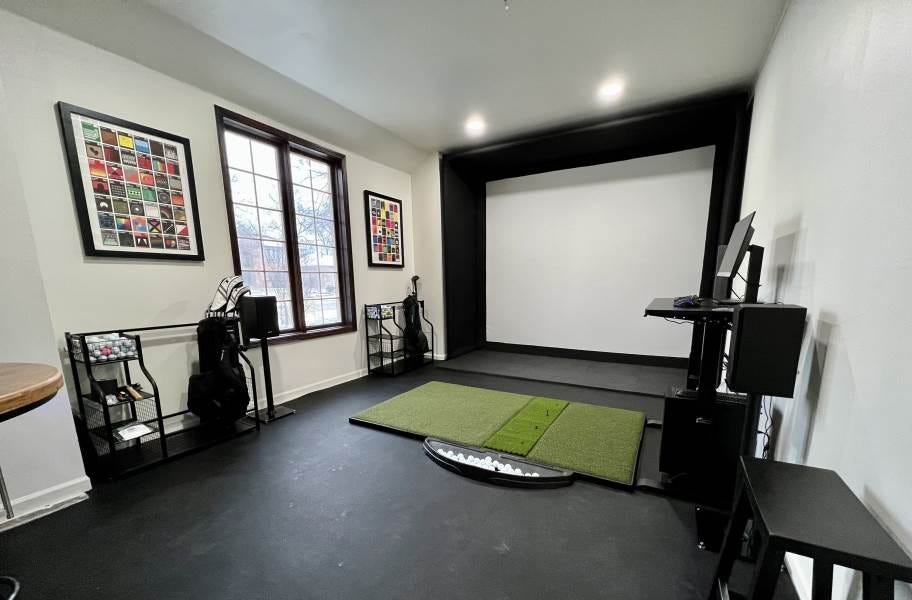
Rubber mats have become a popular flooring choice for homes, gyms, and commercial spaces thanks to their durability, comfort, and versatility. However, with growing concerns about sustainability and reducing landfill waste, many people are now asking: "Are rubber mats recyclable?"
This guide explores the recyclability of rubber mats, how they’re processed, and the steps you can take to recycle or repurpose old mats. Whether you're upgrading your flooring or looking for eco-friendly options, understanding the impact and potential of recycled rubber materials is key to making sustainable choices.
Can Rubber Mats Be Recycled?
The good news is that rubber mats are recyclable, especially those made from recycled rubber flooring materials. However, their recyclability depends on a few factors:
- Material Composition: Mats made from natural rubber or recycled tire rubber are more easily processed compared to those containing synthetic additives or mixed materials like polypropylene.
- Condition of the Mats: Clean, intact mats are more likely to be accepted at a recycling facility than those heavily damaged or contaminated with debris.
- Type of Rubber: Some mats, such as anti-fatigue mats or safety matting, may include additional layers that impact the recycling process.
By choosing mats with high recycled content, you can increase the likelihood of successful rubber recycling while supporting eco-friendly production practices.
How Rubber Mats Are Recycled
The recycling process for rubber mats typically involves breaking them down into smaller particles called crumb rubber. Here’s how it works:
- Collection and Sorting: Mats are collected at recycling facilities, where they’re sorted by material type.
- Shredding: The mats are shredded into smaller pieces, separating the rubber from any non-recyclable components.
- Crumbing: The shredded pieces are ground into crumb rubber, which can be reused to create various recycled rubber products.
- Repurposing: Crumb rubber is used in products like rubber mulch, asphalt, playground surfaces, and new rubber flooring.
This process not only extends the life of the material but also reduces landfill waste, making it an essential part of sustainable flooring practices.
Benefits of Recycling Rubber Mats
Recycling rubber mats is a practical way to reduce waste and conserve resources while supporting sustainability. From reducing landfill contributions to saving energy, the benefits of recycling extend far beyond the mats themselves. Here’s a closer look at why recycling rubber mats matters:
Reducing Environmental Impact
Recycling rubber mats prevents them from ending up in landfills, where they would take years to decompose. By diverting these materials, we help reduce pollution and conserve landfill space, protecting the environment for future generations.
Supporting Sustainable Practices
Using recycled rubber material contributes to a circular economy, where materials are continuously reused rather than discarded. This reduces the demand for new rubber and promotes eco-friendly manufacturing.
Saving Energy and Resources
Recycling uses less energy compared to producing new rubber from scratch. It also reduces reliance on natural resources like rubber trees or oil-derived materials, creating a more sustainable industry overall.
How to Recycle Rubber Mats
Recycling old rubber mats is easier than you might think and provides an excellent opportunity to reduce waste while contributing to sustainability efforts. Whether you want to recycle, repurpose, or donate your mats, there are plenty of ways to give them a new lease on life. Here’s how to get started:
1. Check with Local Recycling Centers
The first step is to contact nearby recycling facilities to determine if they accept rubber mats. Some facilities specialize in tire recycling, which often includes similar materials used in mats.
Before dropping off your mats, ask if the facility has specific requirements. For example, you may need to clean the mats to remove dirt and debris or cut them into smaller pieces to simplify processing. Large mats and rubber rolls are particularly suited for recycling as they often contain higher percentages of recycled rubber material.
If your mats were originally installed over concrete, our guide on how to install rubber flooring on concrete offers tips that may also help with their removal for recycling.
2. Repurpose the Mats
If recycling isn’t an option, consider repurposing your rubber mats for other uses around your home or workspace. Cutting them into smaller pieces can transform old mats into welcome mats, garden liners, or even outdoor rubber flooring. These DIY projects can extend the life of your mats and reduce waste.
For example:
- In sound-sensitive environments, old mats can be repurposed to create sound-dampening barriers, as rubber mats absorb sound and reduce noise levels.
- Use sections of rubber rolls or rubber tiles to create custom flooring for garages, workshops, or garden paths.
3. Donate to Community Organizations
Another effective way to recycle old mats is by donating them to organizations that can use them for practical purposes. Schools, gyms, animal shelters, or community centers often appreciate donations of rubber mats, rubber rolls, or smaller rubber tiles for flooring or activity spaces.
For example:
- Gyms may use them as temporary flooring solutions for workout areas.
- Animal Shelters often use mats to create soft, easy-to-clean spaces for kennels or play areas.
- Schools can incorporate rubber mats into playground surfaces or activity spaces.
Choosing Recyclable Flooring Solutions
So, are rubber mats recyclable? Absolutely. Rubber mats, rolls, and tiles with high recycled content are excellent choices for eco-conscious buyers. They combine the durability and versatility of rubber with the benefits of recycled materials, ensuring a positive impact on the environment.
Explore Flooring Inc.’s wide selection of rubber flooring options, including mats, rolls, and tiles made with recycled rubber materials. Together, we can build a more sustainable future, one floor at a time.


